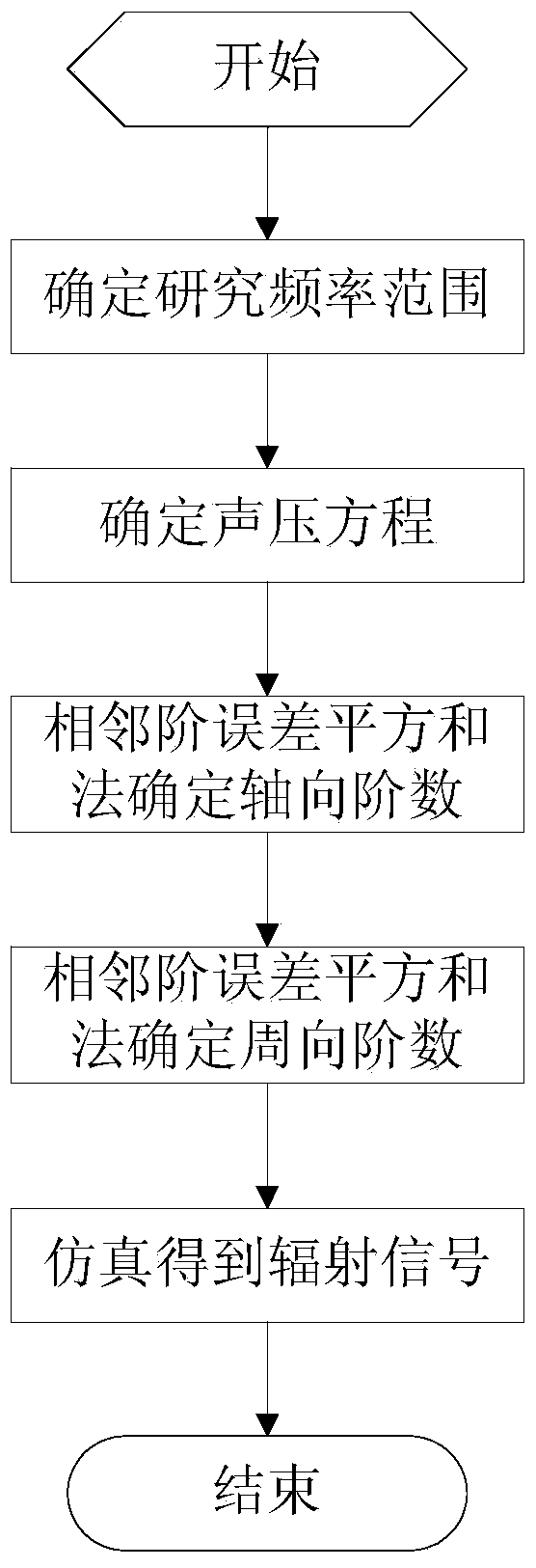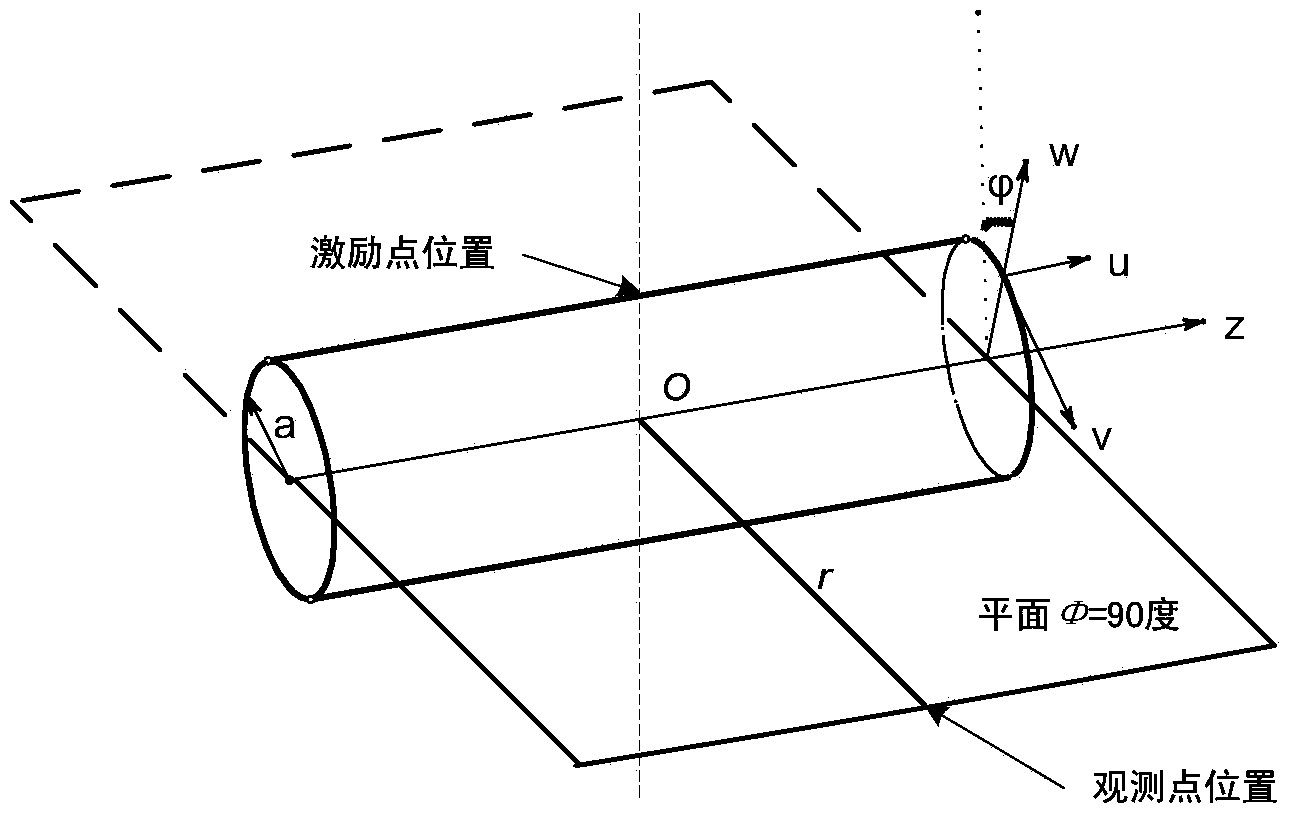Method for quickly estimating underwater target shell radial vibration low-frequency sound radiation signals based on mode decomposition
An underwater target, modal decomposition technology, applied in the direction of calculation, special data processing applications, instruments, etc., can solve the problem of no modal order method, high computational complexity of underwater target acoustic radiation signal, and inability to achieve real-time performance And other issues
- Summary
- Abstract
- Description
- Claims
- Application Information
AI Technical Summary
Problems solved by technology
Method used
Image
Examples
Embodiment
[0026] A method for quickly estimating the radial vibration low-frequency acoustic radiation signal of an underwater target shell based on modal decomposition in this embodiment, as shown in figure 1 shown, including the following steps:
[0027] Step 1: According to the model structure of the research object, determine the frequency range of the research object; the relationship between the frequency range and the model structure of the research object is shown in the following table:
[0028]
[0029] That is, when the model of the research object involves a small number of ribs, ribbed plates, and decks, the frequency band is selected as a high frequency band, and the frequency range at this time is the wavelength Corresponding frequency to 20KHz; when the model of the research object involves the importance of the resonance of the cylindrical shell on the rigid cylindrical baffle, the frequency band is selected as the middle frequency band, and the frequency range is t...
Embodiment example
[0054] This example considers a single-layer cylindrical shell with no substructure, such as figure 2 Shown; the central axis of the cylindrical shell in the figure is axis, is the geometric center of the cylindrical shell, and the length is , with a radius of , with a thickness of , is the displacement along the central axis (axial direction) of the cylindrical shell; is the displacement along the radial direction (radial direction); angle is The angle between the direction and the vertical direction, accompanied by the radial change, angle The range of variation is (- π , π ); is when the included angle is , the displacement along the tangential direction (circumferential direction) of the cylindrical shell, for the observation point and distance between axes.
[0055] Shell length ,radius ,thickness , shell material density , medium density , and the coordinates of the observation point are . It can be seen from the analysis that th...
PUM
 Login to View More
Login to View More Abstract
Description
Claims
Application Information
 Login to View More
Login to View More - R&D
- Intellectual Property
- Life Sciences
- Materials
- Tech Scout
- Unparalleled Data Quality
- Higher Quality Content
- 60% Fewer Hallucinations
Browse by: Latest US Patents, China's latest patents, Technical Efficacy Thesaurus, Application Domain, Technology Topic, Popular Technical Reports.
© 2025 PatSnap. All rights reserved.Legal|Privacy policy|Modern Slavery Act Transparency Statement|Sitemap|About US| Contact US: help@patsnap.com



